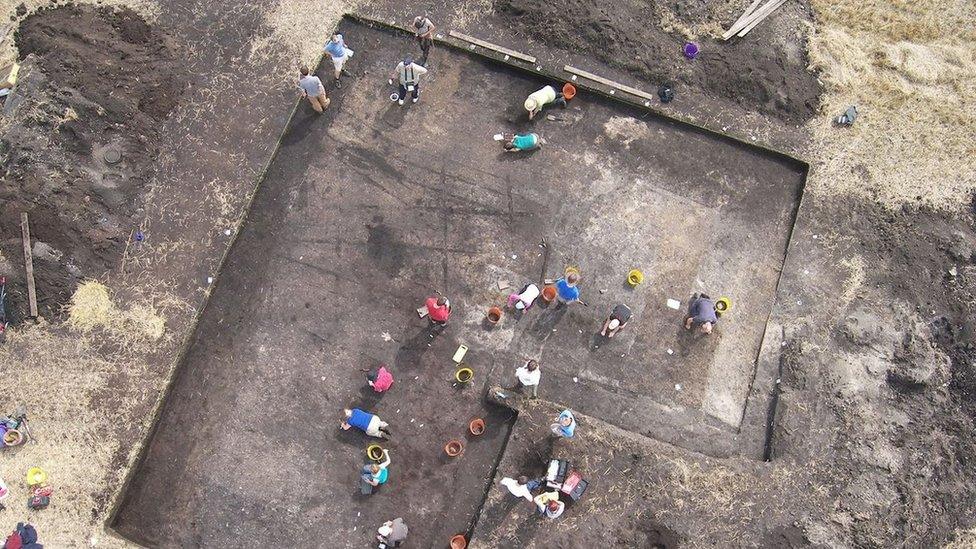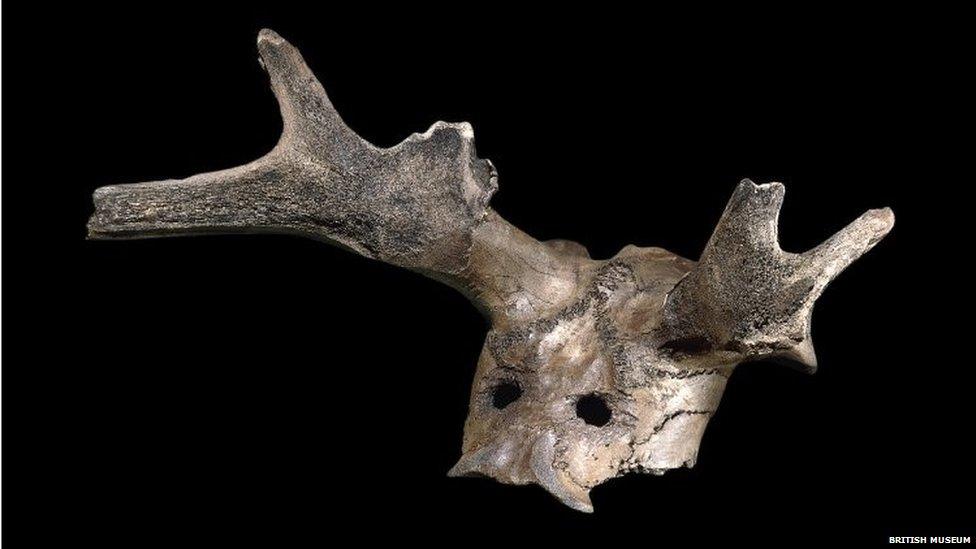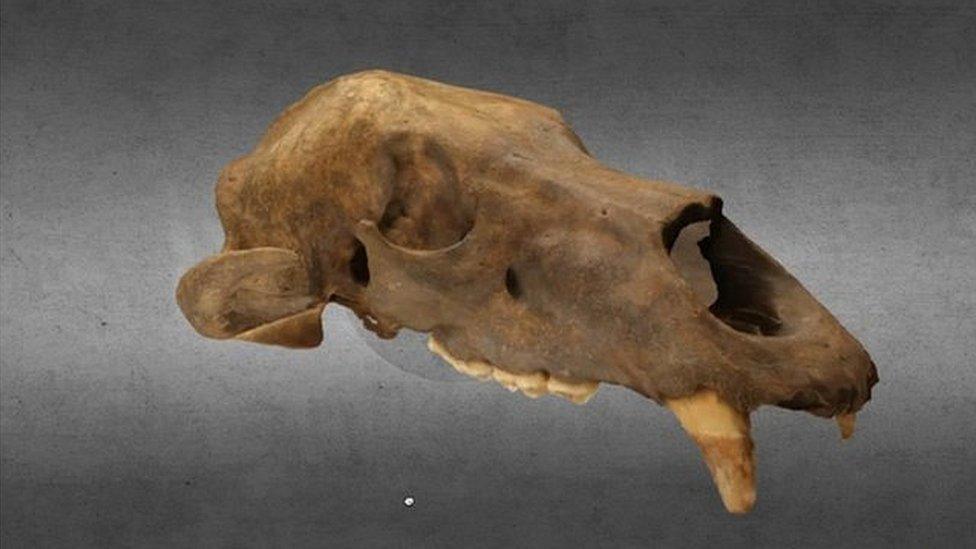Wetland archaeological sites at risk
- Published

Recent excavations at Star Carr, a Mesolithic site in North Yorkshire, revealed that organic materials were being degraded
Archaeological remains at wetland sites across the world could be at risk of being degraded and lost to environmental change, say scientists.
University of York researchers carried out experiments demonstrating how changing conditions in wetlands were destroying ancient organic material.
Their work focused on the Mesolithic site of Star Carr in North Yorkshire., external
Concern about Star Carr was raised after excavations in 2006 to 2007 showed that materials had broken down.
The site, dated to about 9,000 BC, became famous precisely because of the preservation of material found buried deep in the peat when it was discovered in 1948.
Those discoveries included more than 20 red deer antler headdresses that were thought to be used in shamanic rituals. Other organic material, including fossils and pollen, allowed scientists to reconstruct the environment - building up a picture of Britain just after the end of the last Ice Age.

Star Carr is famous for some unusual and remarkably well preserved materials, including antler headdresses
But the 2006 dig, by York and Manchester University researchers, revealed "jelly-like" demineralised bone samples and wood that was flattened and crumbly. This caused scientists to question whether such precious materials would be safe if they were left in situ.
Wetland in a bucket
Dr Kirsty High, lead researcher on the project, explained that environmental changes had altered the chemistry of the site.
"The main thing that preserves wetland sites is the lack of oxygen," she told BBC News. "At Star Carr, it is that the water table has dropped."
This has brought in oxygen, which has reacted with sulphur compounds in the peat to produce sulphuric acid and this "highly acidic environment" destroys previously preserved organic materials.
The researchers recreated this geochemistry in fermentation buckets in their laboratory. They buried bone and wood samples in separate buckets of sand, garden compost and Star Carr peat for a year, and found that the materials decayed very quickly in their "micro-wetland".
"If you had another site where the water table had dropped, the same thing could happen. Sulphur is present in a lot of different soils and mineral types," Dr High explained.
The scientist added that, fortunately, most of the important material was excavated from Star Carr between 2010 and 2013.
"We don't think it would survive much longer if it was left there," she said.
"But in the Vale of Pickering - the whole area - there is quite a lot of archaeology. And there are obviously a lot of other wetland areas in the UK that have a lot of archaeology like the Somerset Levels and the East Anglian Fens [that could be at risk]."
- Published10 October 2015

- Published13 September 2012
